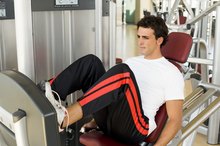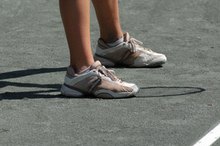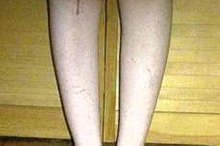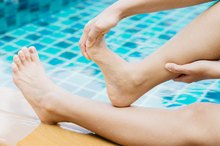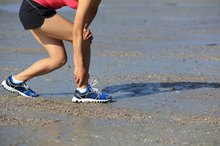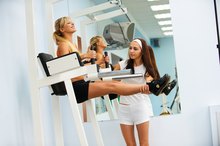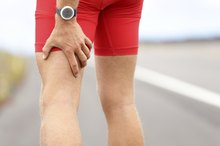How to Strengthen the Leg Muscles Damaged by Statins
Statins are one of the most common and effective medications used to lower cholesterol. In fact, millions of Americans take them each day. Most have no issues, but some people report muscle pain and weakness while on the drug. These symptoms can be an indication of myopathy and muscle damage. Talk to your doctor as soon as you notice any unusual symptoms.
Changing Medications
Switching to another cholesterol-lowering medication is the first step to repairing any damage caused by statins, especially if you’ve been taking the drug for less than a year. Muscle damage is typically the most severe at the highest dosage during the first year of its use. Although statins are one of the most effective drugs used to treat high blood cholesterol, bile-acid-binding resins and cholesterol absorption inhibitors are also beneficial. Your doctor can help determine which medication best suits your needs.
Assessing the Damage
Hurt Left Side of the Lower Back After Leg Pressing
Learn More
Before trying to reverse any muscle damage caused by statins, talk to your doctor about a physical examination. He can assess the tone and strength of your muscles as well as any atrophy that has taken place. During the examination, you may find that the symptoms you’re experiencing aren’t actually the result of muscle damage, but instead, problems with your tendons or joints, which can sometimes mimic statin-induced myopathy.
Making a Plan
After assessing the damage, you and your doctor can establish a plan to help improve the strength of your legs. Strenuous or extended periods of exercise are known to induce myopathy, particularly if you’re still on the drug causing the damage, so you need to take special care when starting an exercise program. Doing too much too soon could worsen your condition. A doctor or physical therapist is key to preventing this complication.
Improving Strength
Causes of Burning Calf Pain
Learn More
Once your doctor gives you the go-ahead, you can start your exercise program. With rehabilitation, strength training often plays an important role to returning strength to muscles damaged by medications. Keeping the weights and repetitions relatively low is a good place to start. As your strength improves, progressively increase both the weight and reps. At the same time, your doctor or physical therapist will likely encourage cardiovascular activity. Walking is probably the most accessible, so don’t be surprised if you find yourself on the treadmill. To start, you may only be able to go 10 minutes at a stretch. But like strength training, you’ll increase the time until you’re walking for upward of 30 minutes each session.
Reducing the Pain
Taking coenzyme Q10 may help — at least when it comes to the pain associated with statin-induced muscle pain. A study published in the "Journal of the American College of Cardiology" found that patients taking CoQ10, as it’s often called, reported fewer incidences of pain while exercising when taking this supplement than other nutrients, such as vitamin E. Although the study was small, and further research is necessary, including this supplement in your diet may lessen pain, making it much easier to workout and improve your strength.
Related Articles
References
- Cleveland Clinic Journal of Medicine: Statin Myopathy – A Common Dilemma Not Reflected in Clinical Trials
- Drug-Induced Diseases: Prevention, Detection and Management
- Journal of the American College of Cardiology: The Role of Coenzyme Q10 in Statin-Associated Myopathy
- Canadian Medical Association Journal: Association Between Statin-associated Myopathy and Skeletal Muscle Damage
Writer Bio
Based in Minneapolis, Minn., Dana Severson has been writing marketing materials for small-to-mid-sized businesses since 2005. Prior to this, Severson worked as a manager of business development for a marketing company, developing targeted marketing campaigns for Big G, Betty Crocker and Pillsbury, among others.
